Out with the new, back in with the old
Tollinton Market, once a hub for housewives and students in the heart of Lahore, is now an empty husk.

Thousands used to walk through the main entrance of the market each day to buy goods they couldn’t get anywhere else.
Now, its three colossal green doors are chained and locked. The few people milling around are mostly employees of the Lahore Museum, stepping out for a chat and a cigarette.
“It was considered the most central and ideal place to shop until the mid 1940s,” says Dr Rafiq Ahmed, who worked with his father at the Punjab Store, one of the first grocery stores at Tollinton, from 1939 to 1956.
“Then in the 1950s the roof began to leak and the walls started to crack. It got worse due to the negligence of the government and those operating the shops,” he says.
Tollinton continued to deteriorate and in 1994 was shifted to a new location. The old location was restored and converted to a museum in 2006.
But New Tollinton, a dingy meat market on a small road linking Jail Road and Ferozepur Road, carries none of the architectural or historical value of its predecessor.
And the new museum appears to be little used, apart from occasional exhibitions. Museum officials gave The Express Tribune conflicting information about how often it hosted these.
Uzma Usmani, the restoration and exhibition officer of the Lahore Heritage Museum, said it had hosted 25 exhibitions in the four years since it became a museum, including five last year. But Zubair Rabbani, the museum’s deputy director, said it hosted 13 last year.
The museum charges between Rs5,000 and Rs8,000 per exhibition and the last one was held in February. They are rarely held in the summer, particularly during the monsoon season.
“After heavy rain, water seeps through the walls and can damage pictures,” says Usmani. Hence even the museum’s small personal collection of pictures of old Lahore – donated by Fakir Syed Aijazuddin, the principal of Aitchison College – do not hang on the walls.
The Parks and Horticulture Authority was responsible for transforming the old market into the museum, between 1994 and 2006. Officials of the PHA were unavailable for comment.
New market
The lack of visitors is also a problem at New Tollinton, which is unsurprising considering the smell emanating from its butchers’ shops. Apart from the putrid stench that makes breathing a challenge, the place is littered with chicken feathers and organs.
“No one likes to come here. You barely see any customers,” said Nazir Ahmed, who used to help his father run Lyallpur Bakery in the old market. Now nearing 70, he runs a bakery in New Tollinton. There can be no comparison between the two, he said.
“This building has shops selling either meat or pets. Going to the old market was a status symbol. The wealthiest of the city shopped and bargained there; this place is nothing like it,” he said, swatting a fly.
Keeping the market clean is the job of the market manager and his committee.
But his shop, too, was littered with animal waste and body parts.
Moving troubles
Ironically, lack of hygiene was one of the problems the relocation of Tollinton was supposed to resolve.
“The location of the new market was ideal given the shifting settlement patterns of the affluent of Lahore,” said an elderly man at New Tollinton who wished not to be named.
“It could have been frequented by the newer generation, if it had been maintained, beautified and kept at the standard of the Tollinton Market of the 1940s and not the 1980s,” he said.
Rents at the old market were very low; not enough to keep things running smoothly, he said. “Low rents was another reason cited by the government for relocation. Also most traders favoured shifting as basic necessities were available for less at the nearby Old and New Anarkali,” the 82-year-old added.
He said three men from the poultry department of the old market were put in charge of shifting and allocating the shops in the new building, which had 107 shops compared to 30 in the old building.
“The division and allocation was highly unfair,” he said. Referring to those in charge as Chaudhrys, he said, “They got the old market traders shops on high-interest loans from the Bank of Punjab after the Lahore High Court overturned an earlier decision to provide shops in the new place for free. These were the people who also got themselves bigger and more accessible places in the new market,” he said.
Unlike Nazir Ahmed, many shopkeepers decided not to move to the new market when Old Tollinton was shut down in 1994.
Tahir Ali ran a successful grocer at the old market. His son Iqbal Ali decided that instead of relocating to the new building, he would set up a store in Liberty Market. He named the store Al-Fatah.
Published in The Express Tribune, August 29th, 2010.





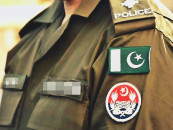

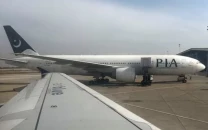
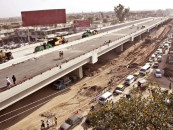

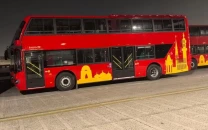

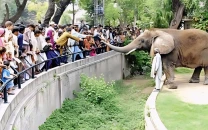






COMMENTS
Comments are moderated and generally will be posted if they are on-topic and not abusive.
For more information, please see our Comments FAQ